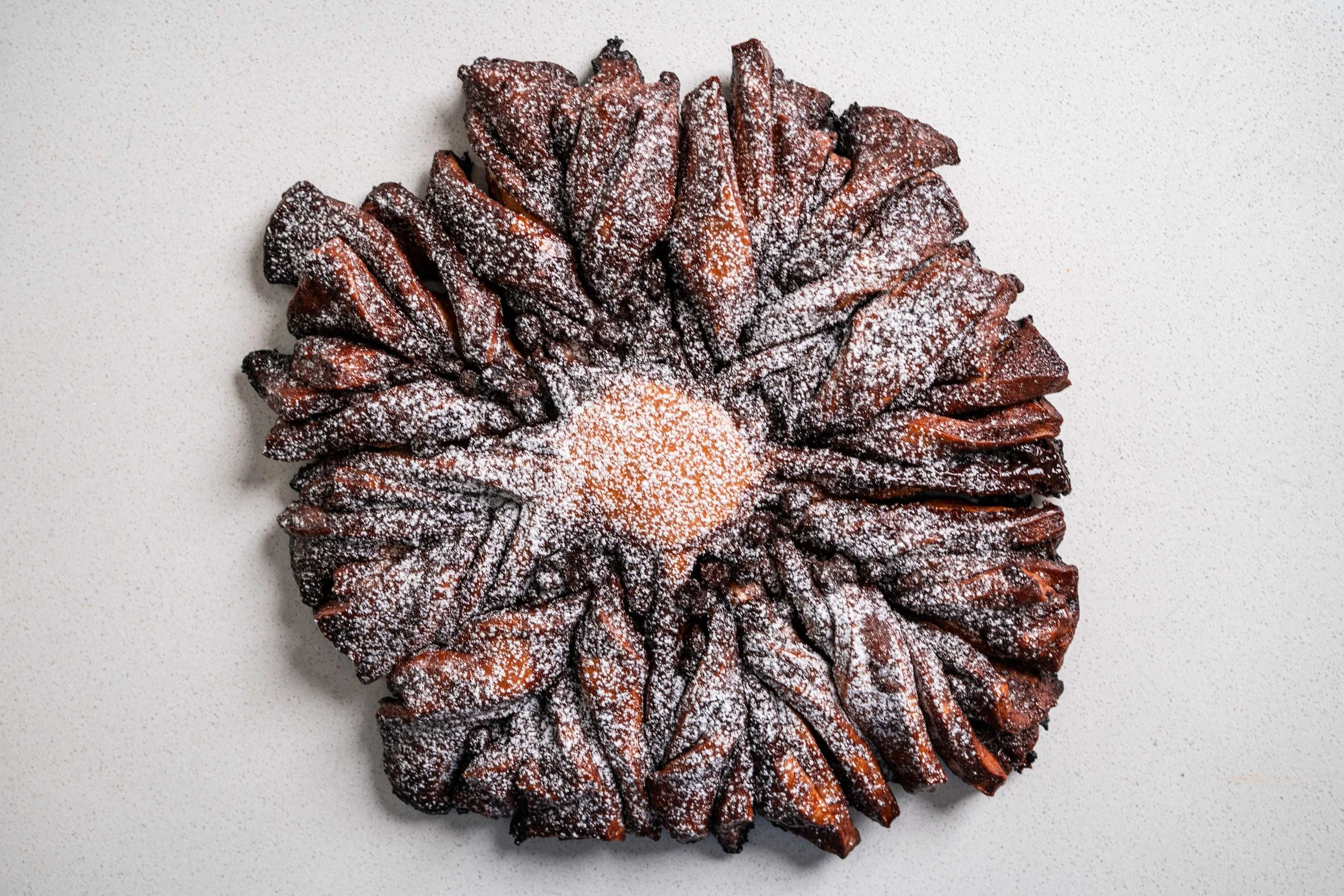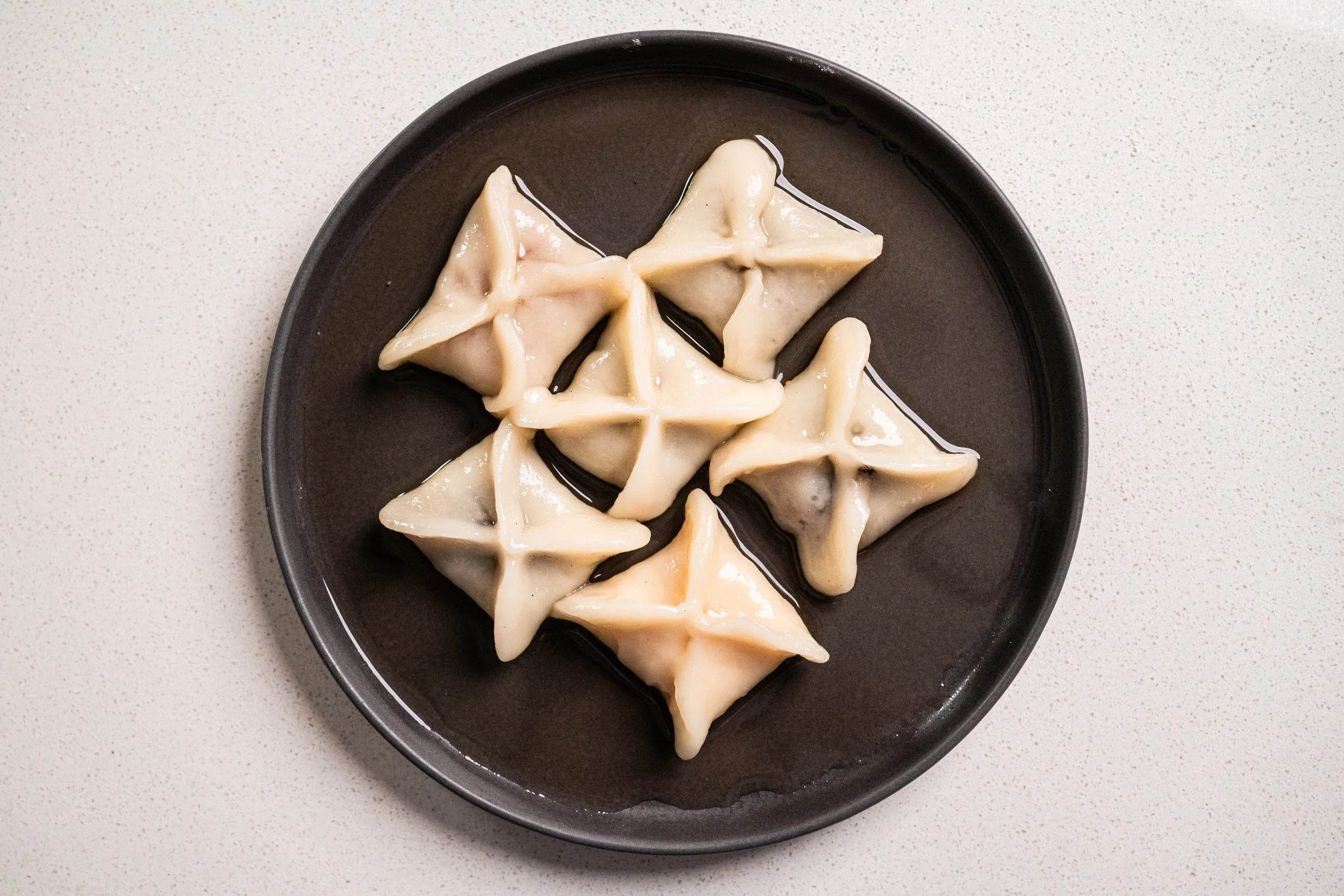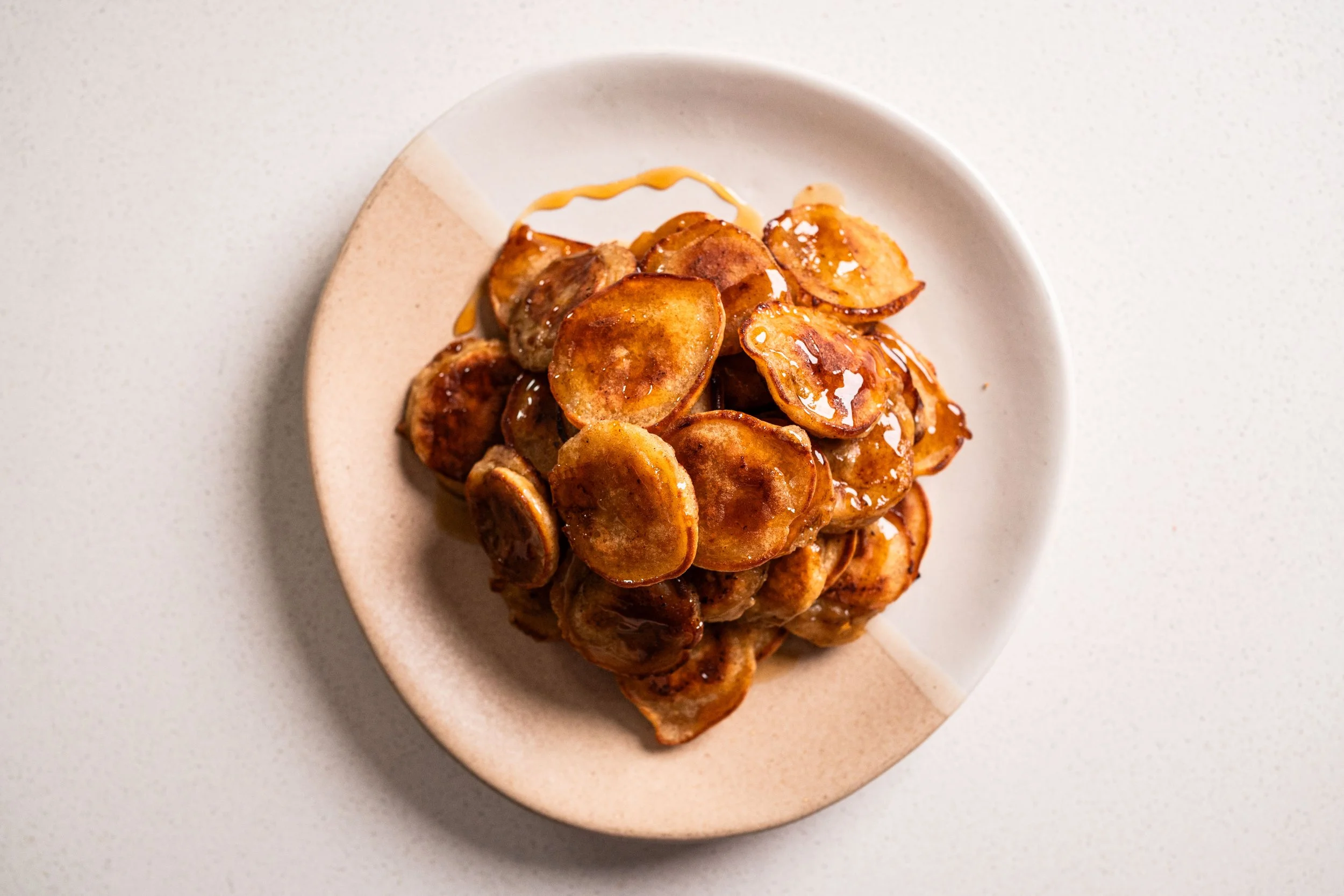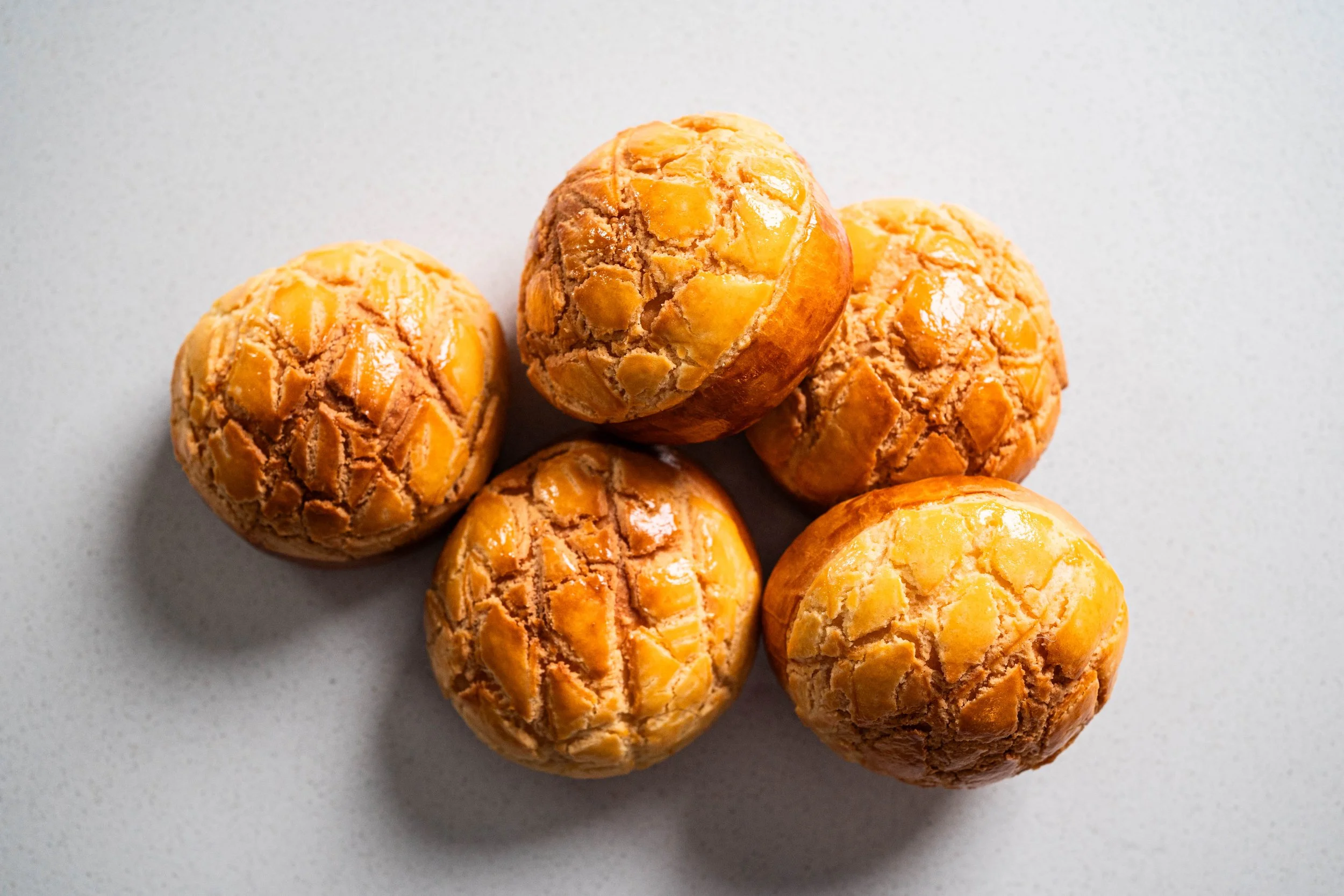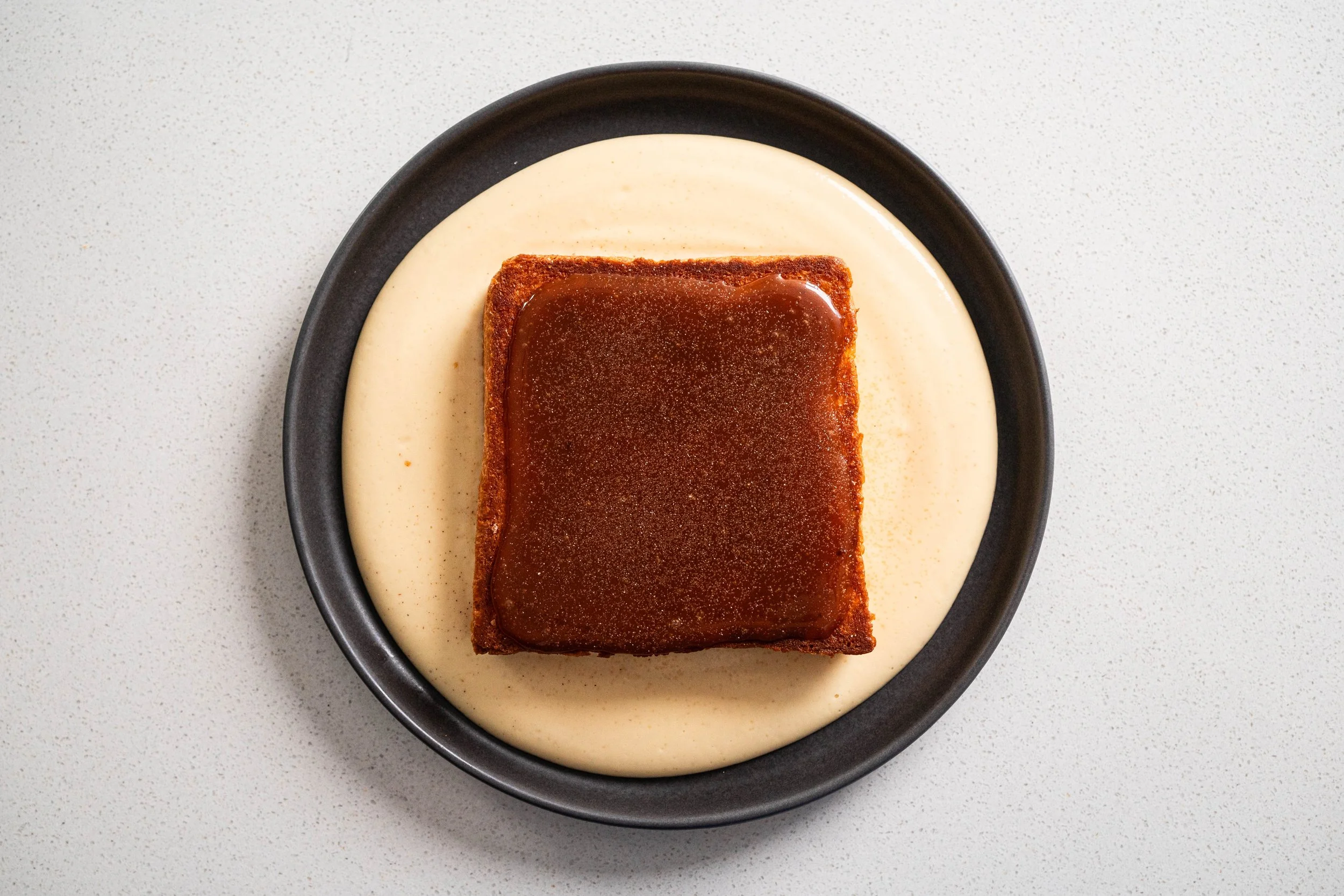Ramen Eggs (Ajitsuke Tamago)
Ramen eggs are the best eggs. No question.
Some people might find certain contentment in the tidily tucked, Jacques Pepin-esque French omelette, or find joy in emulating Gordon Ramsay’s style of assaulted scrambled eggs, or even revel in the delicate balance of shock and salivation when faced with a Filipino balut. But for me, glorious eggy happiness comes in the form of ajitsuke tamago, or as they’re more commonly known—ramen eggs!
Soy-braised, soft-centered, and worthy of a Shakespearean soliloquy, ramen eggs are a dream. Each element of the ramen egg is near perfect.
Let’s start with the yolk. The yolk is a gentle gradient from just-set curds on the outside to a runny custard in the center, a hint at 63°C yolks before 63°C yolks were cool. Then, there’s the egg white, encasing the tender orange yolk within. Bouncy and gelatinous, the whites of a ramen egg serve as a canvas to the richness of the yolk, adding a supple bite, a textural contrast to the melted yolk. And then there’s the skin—stained earthy brown, smelling of soy and umami, and proudly Asian.
Like the best egg dishes—Pepin-esque omelettes, creamy scrambled eggs, and bulbous baluts included—ramen eggs come together in no time at all, and certainly a fraction of the time it takes to make actual ramen. To make them, just boil some eggs (6 minutes gives you the greatest yolk gradient in my tests), peel them, simmer some soy with Shaoxing, sugar, and spices, and submerge the eggs in the soaking liquid to infuse overnight. That’s it. With the littlest of effort, you get the bestest of eggs.
So give me ramen eggs over all other eggs any day of the ovulation cycle. They don’t even have to come with a bowl of ramen. Plonk them onto a bowl of rice, plunge them into porridge, or even just pop them straight into my mouth whole. This is an ovum deserving of an ovation, regardless of how you have it.
Ramen Eggs (Ajitsuke Tamago)
makes 6
Ingredients
6 eggs, at room temperature
60ml (1/4 cup) light soy sauce
15ml (1 tablespoon) mirin, or Shaoxing wine
15g (1 tablespoon) light brown sugar
1 star anise
1 cinnamon stick
2 cloves
240ml (1 cup) water
Directions
We’ll start by boiling the eggs. Bring a pot of water to the boil. (Make sure that you have enough water to completely submerge all the eggs.) When the water has come to a boil, gently place the eggs into the boiling water, and let it cook for 6 minutes, making sure the water is constantly simmering. Prepare an ice bath, and when the eggs are done, immediately remove them from the boiling water and plunge them into the ice bath to stop the cooking process.
In a small saucepan, add in the soy sauce, Shaoxing wine, brown sugar, and all the spices (start anise, cinnamon, and cloves). Place this over high heat, and once it comes to a boil, remove from the heat and add the 240ml of water to it.
Peel the eggs, and place them snugly in a container. Pour the soy marinade over the eggs, making sure all the eggs are completely submerged. (Add a bit more water to the container if they aren’t.) Then, refrigerate the eggs in the marinade for at least 3 hours, or up to 2 days, depending on how salty and umami-laden you’d like it to be. (I find the sweet spot to be at 1 day, after which it can get a little too salty for my taste.) When they’re marinated to your liking, remove them from the soy liquid, and they’re ready to be eaten! Have them on with ramen, rice, or ravish them on their own.





